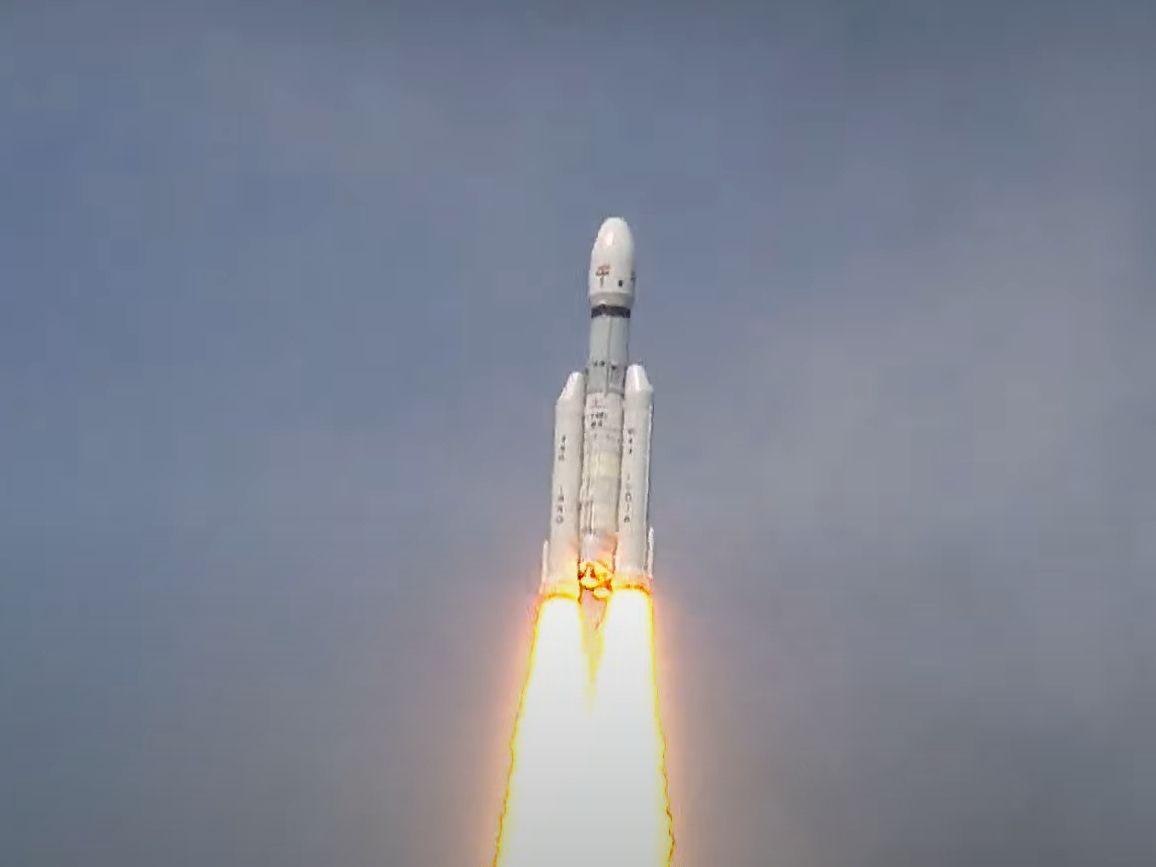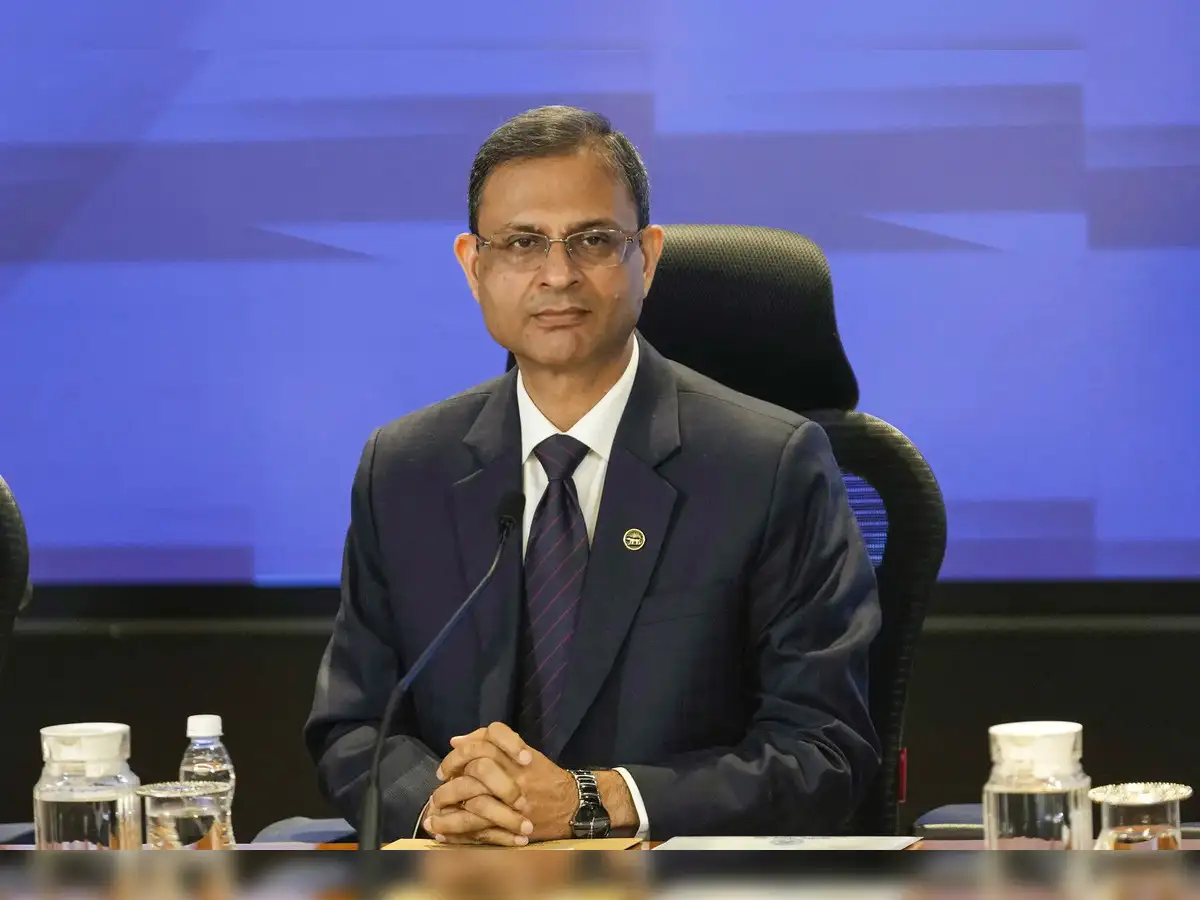In November 2025, ISRO tracked a remarkable event: the propulsion module (PM) of Chandrayaan-3, which had long since moved away from the Moon, naturally drifted back into the Moon’s gravitational domain.
This re-entry (or re-encounter) is highly unusual in space missions. The module returned without any engine burns, purely under the influence of gravity from the Earth, Moon, and Sun.
Such a gravitational flyby provides ISRO and planetary scientists with a unique natural experiment — delivering new insights into orbital mechanics, three-body dynamics, and long-term spacecraft behavior.
This article explores the Chandrayaan-3 mission context, the mechanics of the module’s return, how ISRO tracked it, and what this episode means for the future of space exploration.
Background: Chandrayaan-3 Mission
Mission Objectives
- Chandrayaan-3 was launched in July 2023, with key objectives including a soft landing near the Moon’s south pole, rover exploration, and in-situ scientific measurements.
- The mission comprised three main components: the lander (Vikram), the rover (Pragyan), and the propulsion module (PM).
- While the lander and rover completed their surface mission, ISRO also designed a post-landing plan for the PM, making intelligent use of its residual fuel for extended mission utility.
Propulsion Module Role
- The PM was responsible for carrying the lander and rover to lunar orbit and supporting them until separation.
- Importantly, after the lander and rover separated, the PM retained a substantial amount of fuel — more than initially expected.
- ISRO’s flight-planning team used this surplus to propose a bold strategy: re-orbit the PM away from the Moon and into a stable Earth-bound orbit, rather than letting it become space debris.
SHAPE Payload
- Onboard the PM is a specialized scientific instrument called SHAPE (Spectro-polarimetry of Habitable Planet Earth).
- SHAPE is designed to observe Earth from space, specifically to study the polarization of Earth’s light in near-infrared wavelengths.
- These observations help in understanding how Earth would look as a potentially habitable exoplanet, and provide data on atmospheric properties and reflectivity.
How the Propulsion Module Was Returned to Earth Orbit
Maneuvers After Lunar Mission
- In October 2023, ISRO performed a Trans-Earth Injection (TEI) maneuver, moving the PM from lunar orbit to a high Earth orbit.
- Before TEI, ISRO executed a maneuver to raise the PM’s apolune (its furthest point in orbit) significantly, increasing its orbital period — a carefully planned step to maximize efficiency and use of remaining fuel.
- This strategy was driven by multiple goals: ensure collision avoidance (both with the Moon and with Earth’s geostationary belt), prolong the life of the PM, and leverage the SHAPE payload for further science.
Flybys During Return
- During its Earth-transfer trajectory, the PM executed four flybys of the Moon, using gravity to shape its path and reduce propellant consumption.
- These flybys allowed ISRO to test precise navigation, orbital prediction tools, and long-term mission planning strategies.
- By early November 2023, the PM exited the Moon’s Sphere of Influence, settling into a stable and highly elliptical Earth orbit.
Stable Earth Orbit
- After the TEI and flybys, the PM’s new orbit had a long period (almost two weeks) and a high apogee.
- ISRO carefully predicted and confirmed that within this orbit, the PM posed no immediate threat to active Earth satellites, thanks to its trajectory and perigee (closest point to Earth) parameters.
- Meanwhile, SHAPE continued its operations whenever the geometry permitted — particularly when Earth entered its field of view.
The 2025 Re-Entry into the Lunar Zone
Prediction of Return
- In September 2025, data from asteroid-tracking networks indicated that the PM’s trajectory would naturally bring it back near the Moon.
- Importantly, this prediction was not the result of a planned burn or maneuver by ISRO; rather, it was due to the passive drift of the module under gravity.
- Analysts realized the module could cross into the Moon’s gravitational dominance — known as the Moon’s Sphere of Influence (SOI) — again, triggering potential flybys.
Entering the Moon’s Sphere of Influence
- On 4 November 2025, the PM crossed into the Moon’s SOI. In this region, the Moon’s gravity begins to dominate over Earth’s, significantly altering the PM’s motion.
- Once inside this domain, the PM became subject to a stronger lunar pull, which influenced its orbit in new ways.
First Flyby: November 6, 2025
- The first close approach happened on 6 November, when the PM came within about 3,740 kilometers of the lunar surface.
- This event occurred outside the visibility window of India’s Deep Space Network, limiting real-time data collection, but the approach was still confirmed by orbital tracking.
- Despite limited direct contact, the flyby provided crucial information about how the PM’s orbit evolved under natural gravitational forces.
Second Flyby: November 11, 2025
- The second flyby occurred on 11 November, with the PM coming to a distance of approximately 4,537 kilometers from the Moon.
- This time, the flyby was within range of ISRO’s telemetry and tracking network (ISTRAC), allowing more detailed monitoring.
- Across both flybys, ISRO reported that the satellite’s performance remained normal, with no signs of malfunction and no threat to other orbiters.
Changes in Orbital Dynamics
Orbit Size and Shape
- Before re-entry, the PM was in an orbit of roughly 100,000 km × 300,000 km (periapsis × apoapsis).
- After the flybys, its orbit expanded dramatically to about 409,000 km × 727,000 km, showing the significant impact of lunar gravity.
- This dramatic change underscores how powerful gravitational interactions can be — even without active propulsion.
Inclination Shift
- Along with a change in size, the orbital plane of the PM shifted. Its inclination (tilt with respect to the Moon’s orbit) dropped from about 34° to 22°.
- Such a shift indicates that the flybys not only changed how far the module traveled, but also the orientation of its path.
Three-Body Dynamics
- The PM’s journey is a textbook example of the three-body problem in celestial mechanics: the module is simultaneously influenced by Earth, Moon, and even the Sun.
- Because of this interplay, the PM’s path was not straightforward — its orbit evolved naturally under competing gravitational pulls.
- This natural drift, without active thrusting, is a valuable demonstration of gravity-assisted orbital evolution.
ISRO’s Tracking and Monitoring
Role of Ground Stations (ISTRAC)
- ISRO’s Telemetry, Tracking, and Command Network (ISTRAC) played a key role in observing and verifying the flybys.
- During the second flyby especially, ISTRAC maintained regular contact, tracking the PM’s precise position, velocity, and attitude.
- This level of monitoring was critical not only for safety but also for gathering high-quality data on the flyby dynamics.
Telemetry Data & Performance
- Throughout both flybys, ISRO collected telemetry to assess how the PM responded to gravitational forces.
- The module was reported to be in nominal condition, meaning that despite the unplanned re-entry, there were no critical anomalies or degradation.
- ISRO’s teams used this data to validate their models of orbital dynamics and disturbance torques (forces that can slowly twist or tilt a spacecraft’s orientation over time).
Safety Considerations
- One of ISRO’s priorities was to ensure that during these close approaches, the PM did not pose any risk to other lunar orbiters or to itself.
- By continuously tracking and analyzing its trajectory, ISRO confirmed that no dangerous proximities occurred.
- This careful monitoring underscores ISRO’s maturity in managing space operations — even for a module that was not initially intended to return to the Moon.
Scientific and Engineering Implications
Validating Orbital Models
- This flyby event gives ISRO real-world data to test and refine its orbital-prediction models.
- Engineers and scientists can compare observed behavior with simulations, improving future mission design and prediction accuracy.
- Such validation is especially valuable for missions involving weak stability boundary trajectories, gravity assists, or long-duration passive orbits.
Fuel-Efficiency and Mission Design
- The re-entry shows that spacecraft do not always need active propulsion to alter their orbits — gravity can do a lot of work.
- Future missions (especially deep-space or multi-body missions) can exploit passive gravitational interactions to reduce fuel usage and increase mission flexibility.
- This could be especially helpful for sample-return missions, long-term orbital staging, or spacecraft parked in high orbits.
Extended Use of Mission Hardware
- The PM’s long-term survivability and continued trackability highlight how mission elements can be reused or repurposed.
- Instead of discarding the propulsion module, ISRO extended its service, using leftover fuel to continue scientific observations (via SHAPE) and orbital exploration.
- This strategy increases the mission return on investment and reduces space debris.
Enhancing Space Sustainability
- By closely tracking and managing an otherwise “spent” module, ISRO demonstrates responsible space stewardship.
- Such practices contribute to space situational awareness (SSA): understanding where objects are, how they move, and what risks they pose.
- Ensuring long-term monitoring of old mission components helps avoid future collisions and clutter in valuable orbital regimes.
Challenges and Risks
Communication Constraints
- The first flyby occurred when the PM was outside reliable visibility for India’s Deep Space Network, limiting real-time data.
- Such gaps in communication can reduce the fidelity of telemetry and make precise orbit determination harder.
Predictability and Modeling
- Natural drift under multi-body gravitational influence is inherently less controllable than powered maneuvers.
- Small perturbations — such as solar radiation pressure, slight asymmetries in mass distribution, or even micro-thrusts — can compound over time, making long-term prediction challenging.
- Maintaining accurate models requires constant updating, data assimilation, and validation.
Resource Demand
- Tracking a spacecraft for years after its main mission ends demands significant ground station time, analysis, and manpower.
- ISRO must balance these demands with other priorities — especially when the spacecraft is not actively performing high-value science.
Potential Future Risk
- Though no collision risk was reported during the 2025 flybys, the evolving orbit means that future encounters (with other spacecraft or with the Moon or Earth) cannot be ruled out.
- Long-term, the PM might drift into other gravitational regimes or even become unstable, emphasizing the need for continuous monitoring.
Broader Impacts
Strengthening ISRO’s Capabilities
- This natural re-entry enhances ISRO’s reputation as a world-class space agency capable of advanced mission planning, orbital design, and long-term operations.
- It demonstrates not just the ability to land on the Moon, but also to manage and reuse mission assets intelligently.
Scientific Value for Education and Research
- The flyby provides a real-world case study for students, researchers, and mission planners studying three-body dynamics, gravitational perturbations, and long-duration orbital behavior.
- Universities and research institutions can use this data to teach and drive innovation in space mechanics and mission design.
Policy and Sustainability Message
- By responsibly tracking and leveraging the PM, ISRO sends a strong signal about its commitment to sustainable space practices.
- Such an approach helps build global confidence that India is not only exploring space but doing so responsibly and safely.
Implications for Future Missions
- Future lunar or deep-space missions can incorporate gravitational passives, like what Chandrayaan-3’s PM experienced, into their design.
- Gravity-assisted planning, fuel savings, and long-term tracking could become more common in ISRO’s mission architecture.
- This episode could directly influence designs for sample-return missions, platforms in high lunar or Earth orbits, or even multi-body trajectory missions.
Looking Forward: Future Prospects
Possible Additional Flybys
- Given the updated orbit, there is potential for further lunar encounters in the future. Some analysts suggest another close approach could happen around mid-2026.
- Continued tracking will help verify these predictions, and if they materialize, ISRO could again gather useful data.
Use of Remaining Fuel (If Any)
- If any propellant remains, ISRO could consider small corrective maneuvers — though the decision would depend on trade-offs between risk, benefit, and fuel cost.
- Even small thrusts could adjust the PM’s orbit for better scientific geometry or safer paths.
Reactivating Scientific Missions
- If SHAPE (the onboard instrument) is still operable, ISRO might attempt to re-activate it when conditions are favorable.
- More Earth observations, based on polarization or spectroscopy, could further enrich our understanding of how our planet appears from space.
Enhancing Mission Design Tools
- The data from these flybys can feed into ISRO’s simulation and trajectory-design tools, making future missions more precise and fuel-efficient.
- Engineers will likely refine algorithms for gravity-assisted trajectories, weak-stability boundary trajectories, and orbit-shaping maneuvers.
Scaling Sustainability
- This re-encounter sets a precedent: mission hardware does not have to be abandoned or left unmonitored.
- ISRO can formalize strategies for post-mission tracking, re-orbiting, or even repurposing spacecraft — contributing to a more sustainable orbital environment.











